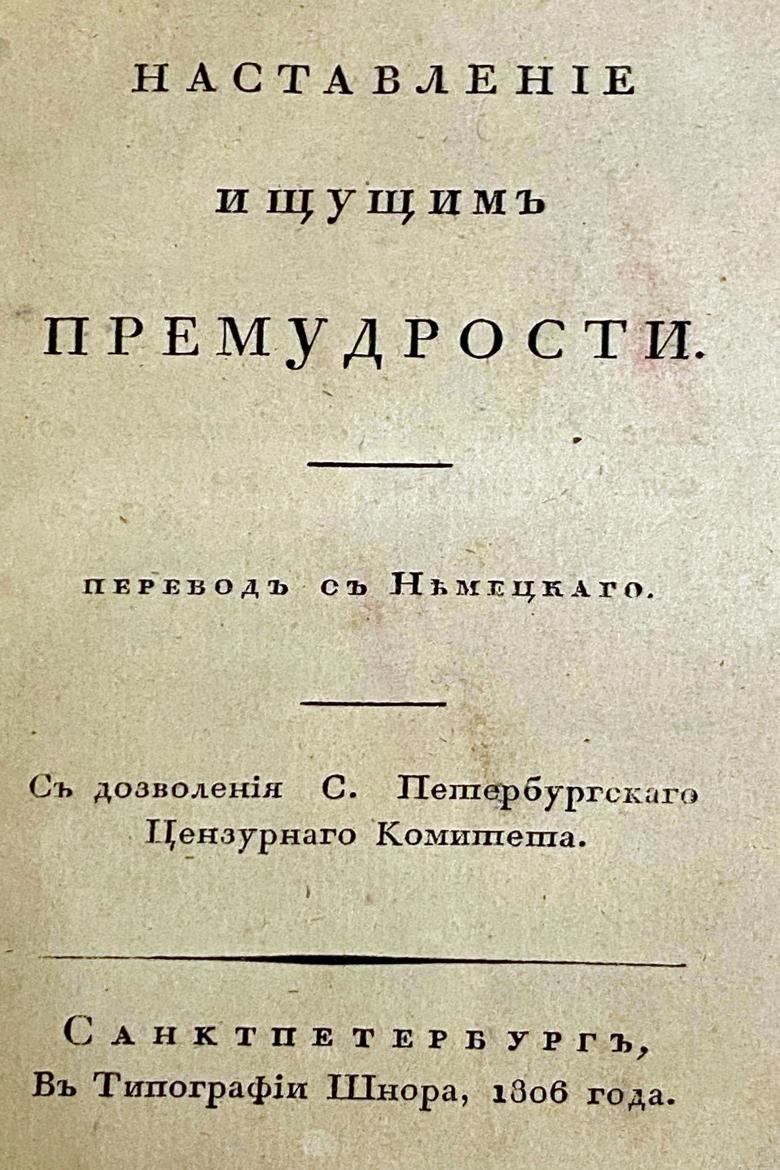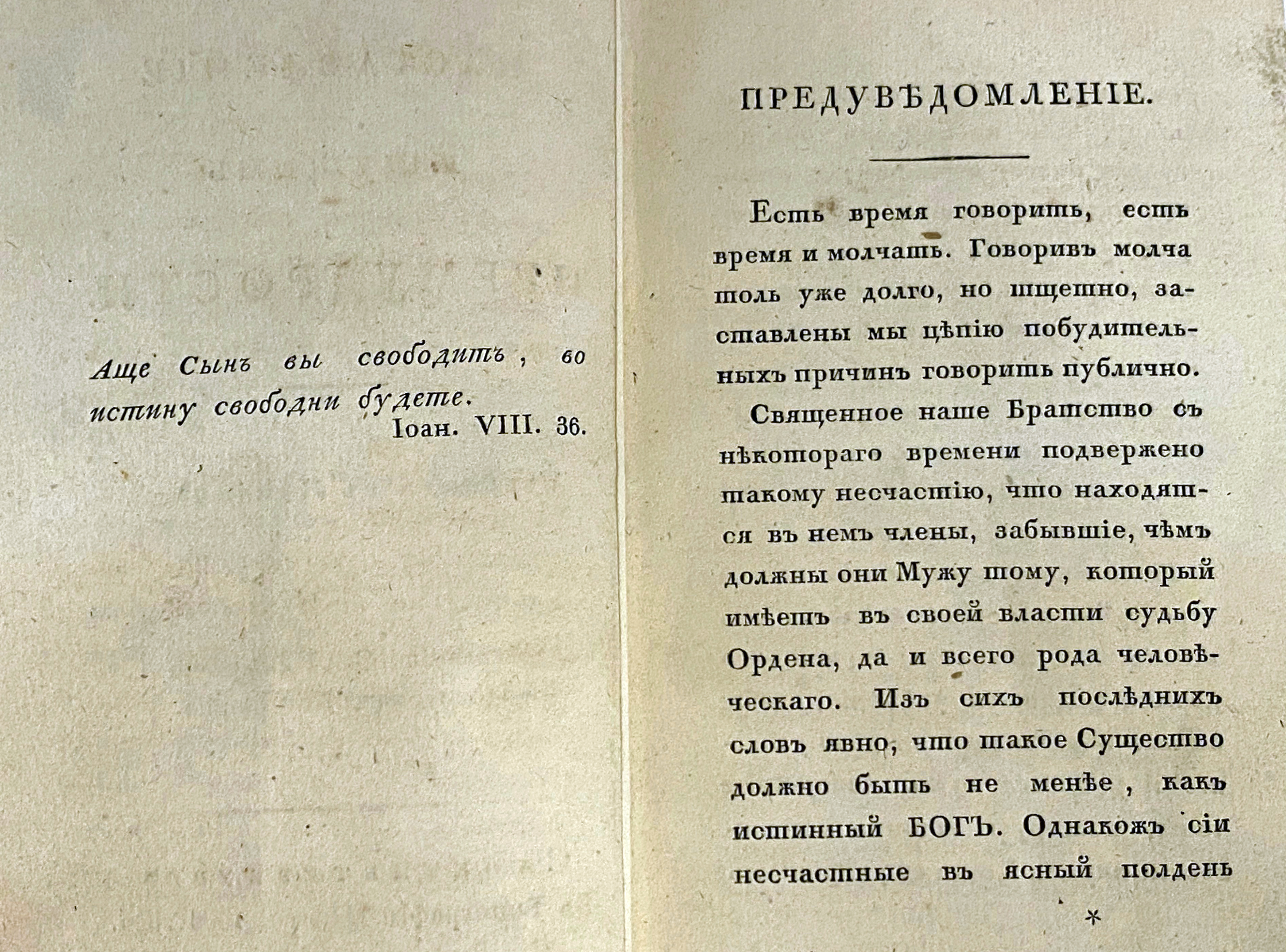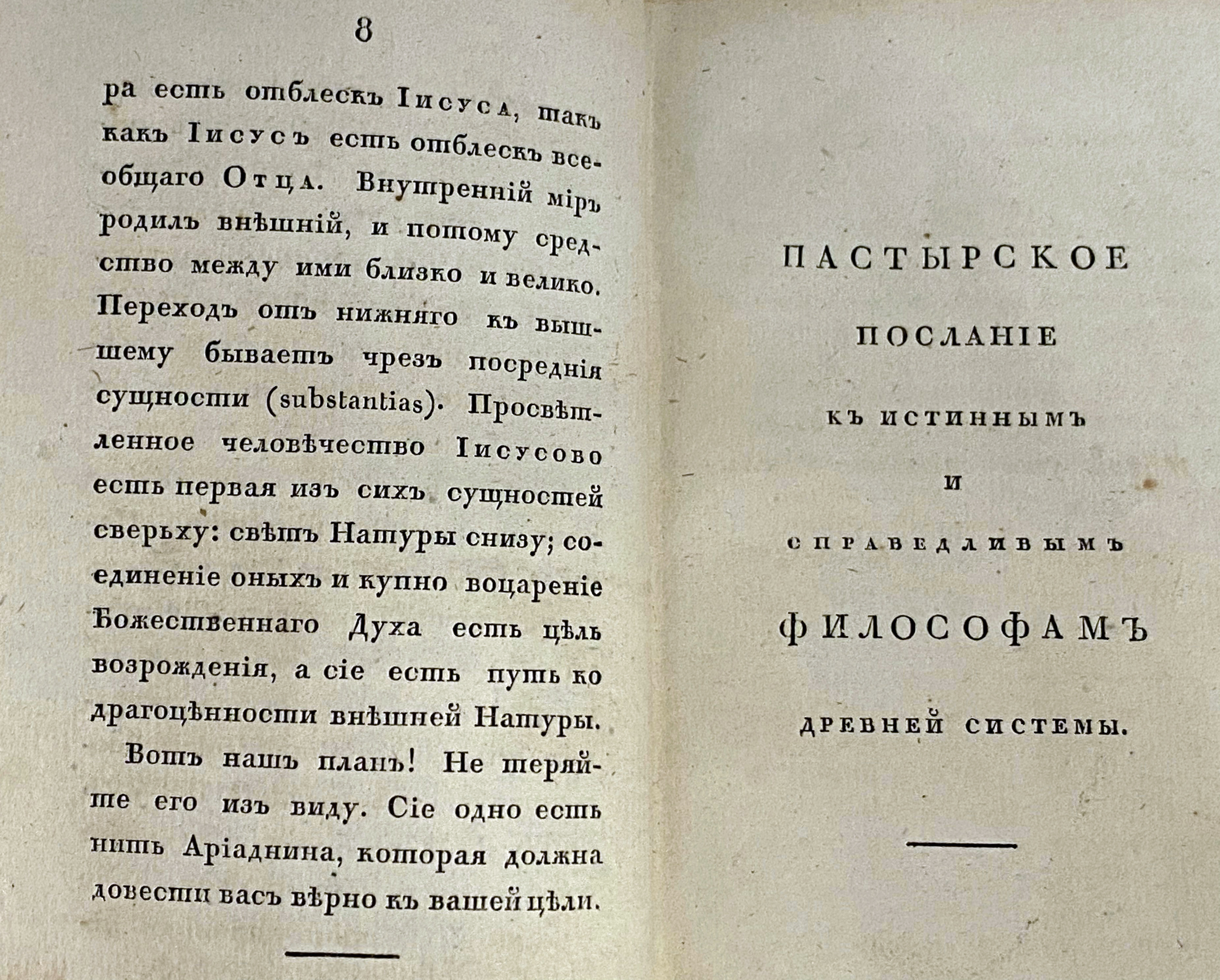The book "Instruction to those seeking wisdom"


Some of our latest news
The book "Instruction to those seeking wisdom"
This week's object is the book "Instruction to those seeking wisdom" of 1806 edition, which was translated by the famous Russian Freemason, philosopher and mystic Alexander Labzin (1766-1825).
The original of this book was published in Leipzig in 1785 and was compiled by local German Freemasons, one of whom was probably Christian August von Haugwitz, a Prussian politician and prominent Freemason, who served as Prime Minister of Prussia from 1792 to 1805.
The first part contains an instruction to Freemasons, entitled "Preface", containing a summary of Hermetic and Christian philosophy, close in spirit to such Renaissance thinkers as Marsilio Ficino and Pico della Mirandola. While emphasising the importance of deep and constant work on one's soul, this instruction also points to the inseparable link between Freemasonry and Christianity and actually provides a Hermetic analogy about the closeness of the material and spiritual world, in other words about the analogy of the microcosm (the individual) and the macrocosm (the Universe).

The book also includes a probable work by August von Haugwitz, "Pastoral Address to the True and Just Philosophers of the Ancient System", conveying Christian philosophy in synthesis with Neoplatonism and continuing the theme of the spiritual and moral growth of Freemasons.

Alexander Labzin was a member of the Moscow nobility and already at the age of six actively began to study arithmetic and foreign languages. The evidence of Labzin's giftedness is that he was recognised as one of the best students in the gymnasium at Moscow University, receiving many awards. Labzin's particular passion was classical languages - Ancient Greek and Latin - and his favourite authors were Plato, Plutarch and Cicero. An early fascination with Plato's philosophy probably predisposed the young Labzin to Freemasonry and already at the age of 16 he began to socialise with the main Russian Freemasons - Nikolai Novikov and Johann Georg Schwarz.
In 1782 Labzin began regularly publishing philosophical articles in Novikov's journals - "Morning Light" and "Evening Glow". The journals were famous for their unusually wide range of topics and presentation of Masonic philosophy. Labzin, like his senior mentors, described the teachings of the ancient philosophers in the context of the knowledge of the ultimate truth, God and one’s own self.
It was Johann Schwarz whom Labzin considered his main teacher, and through whom he learnt Western mysticism, developed his philosophical knowledge and actually shaped his worldview. Consequently, Labzin rejected the philosophical impulses of the Enlightenment and the philosophy of Voltaire, adhering to moderate views that allowed for loyalty to the monarchy and the church, but also calling for the spiritual growth of humanity through the legacy of the philosophers of antiquity and the Renaissance.
Labzin was initiated in Freemasonry in 1783, during the lifetime of his teacher Schwarz, and after his death in 1784 he became close to Nikolai Novikov, with whom he corresponded until Novikov's death in 1818. In 1800 Labzin founded the "Dying Sphinx" lodge in St. Petersburg and became a grand master himself. In parallel, he became famous as a philologist and translated the works of Louis-Sebastien Mercier, Pierre-Augustin Beaumarchais and Jacob Boehme.
In the early 19th century, Labzin began to publish a journal of philosophy and mysticism, "The Zion Herald ", which enjoyed great popularity among his contemporaries. Moreover, in 1799 Labzin reached the pinnacle of his career, first becoming secretary of the St. Petersburg Academy of Arts and in 1818 its vice-president. Later, in 1816, he was awarded one of the highest awards of the Russian Empire - the Order of St. Vladimir II degree - for his active educational activities.
Only after Freemasonry was banned in 1822 did Labzin encounter censorship, which forced him to leave St. Petersburg for Simbirsk, where he lived until his death in 1825.
 Museum
Museum